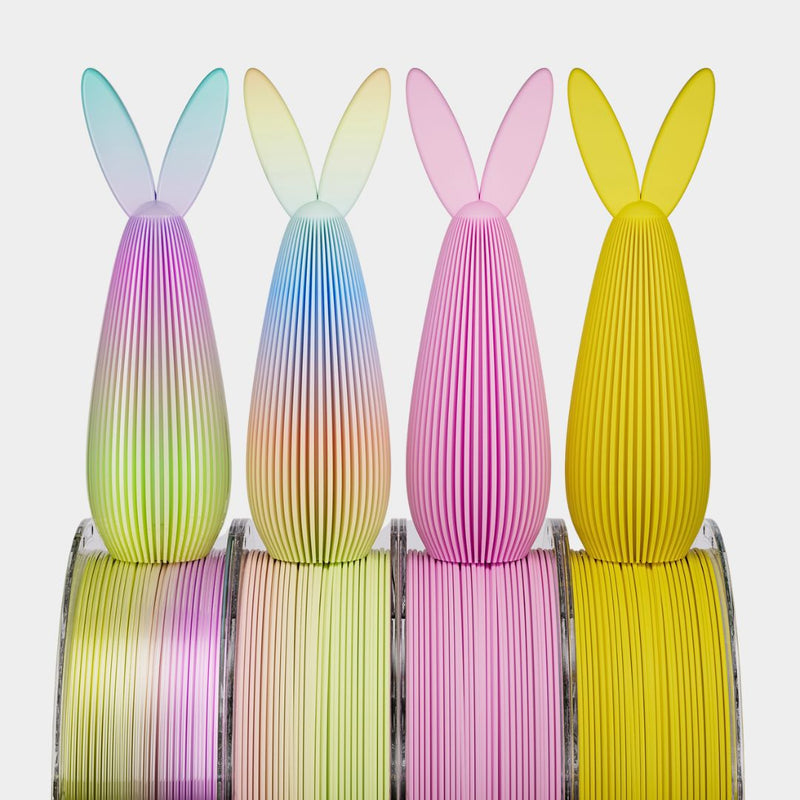Unlock the Magic: Discover the Secrets of Color Changing Filaments for 3D Printing!
3D printing has revolutionized the way we create and manufacture objects, evolving from basic prototypes to intricate designs that push the boundaries of creativity. Among the plethora of innovations in this field, color changing filaments have emerged as a thrilling development, capturing the imaginations of enthusiasts and professionals alike. These unique materials not only add a dynamic aesthetic to printed objects but also provide an interactive experience that traditional filaments cannot offer. In this exploration, we will delve into the fascinating world of color changing filaments, examining their properties, how they work, and the myriad applications they open up for 3D printing enthusiasts.

Understanding Color Changing Filaments
Color changing filaments are specialized 3D printing materials designed to alter their color based on environmental stimuli, primarily temperature or light exposure. Unlike traditional filaments, which maintain a consistent color throughout the printing process, color changing filaments introduce a level of dynamism that can transform the appearance of a printed object after it has been produced. These filaments are typically composed of thermochromic or photochromic materials, which are responsible for the color change. Thermochromic filaments change color in response to temperature fluctuations—rising or falling depending on the thermal conditions they encounter. In contrast, photochromic filaments react to ultraviolet (UV) light, changing color when exposed to sunlight or other sources of UV radiation. This innovative technology not only enhances the visual appeal of 3D printed items but also expands the creative possibilities for designers and makers.
Properties of Color Changing Filaments
The physical and chemical properties of color changing filaments are what make them so unique and versatile. For starters, temperature sensitivity is a key characteristic of thermochromic filaments, which can change color at specific temperature thresholds. This means that a printed object can appear one color at room temperature and shift to another hue when heated or cooled. Light sensitivity, on the other hand, allows photochromic filaments to exhibit similar transformations under varying light conditions. The transition mechanics involve complex molecular interactions within the filament material, where specific compounds react to environmental changes, leading to a visible color shift. Additionally, the durability of these filaments is an important consideration; while they can provide stunning effects, they may also be more susceptible to wear and tear compared to traditional filaments, making careful handling essential. Those who have worked with these materials, including friends of mine, often share their amazement at watching their creations change color in real-time, adding a layer of interactivity that is truly captivating.
Applications of Color Changing Filaments
The applications for color changing filaments are as diverse as the colors they produce. In the realm of decorative objects, these filaments can create stunning visual effects for art pieces, home decor, and personalized gifts, making them ideal for anyone looking to add a unique touch to their creations. Educational tools also benefit from this technology; for instance, teachers can use color changing models to demonstrate scientific concepts such as temperature changes or light reactions. Functional prototypes that change color based on usage conditions can provide immediate feedback, enhancing user interaction and engagement. Moreover, artists and designers are increasingly using color changing filaments for installations that respond to their environment, inviting viewers to experience art in a whole new way. The blend of functionality and aesthetics makes these filaments a popular choice for innovators across various fields.
Best Practices for Using Color Changing Filaments
To achieve optimal results when using color changing filaments, consider the following best practices: first, maintain proper handling of the filament's materials. Additionally, pay close attention to printing settings; even small changes can affect the filament's performance. For instance, adjusting the temperature can change the filaments' transitions. Moreover, ensure your printer settings are recommended for specific filament properties—some filaments may require a specific extrusion speed or temperature to maximize their potential. Understanding these nuances is vital when you are creating intricate prints, as they can impact the consistency of your results. By following these practices, you can enhance the quality and effects of your color changing prints.
Exploring the Future of 3D Printing with Color Changing Filaments
In summary, color changing filaments represent a fascinating advancement in the world of 3D printing, offering unique properties and a wide range of applications that traditional filaments simply cannot match. Their ability to transform in response to environmental changes adds an interactive element to printed objects, making them a favorite among creators. As we continue to explore the possibilities of 3D printing, experimenting with color changing filaments can lead to innovative designs and captivating projects. The future of this technology is bright, and I encourage all makers to dive in and see how these magical materials can elevate their 3D printing experience.







